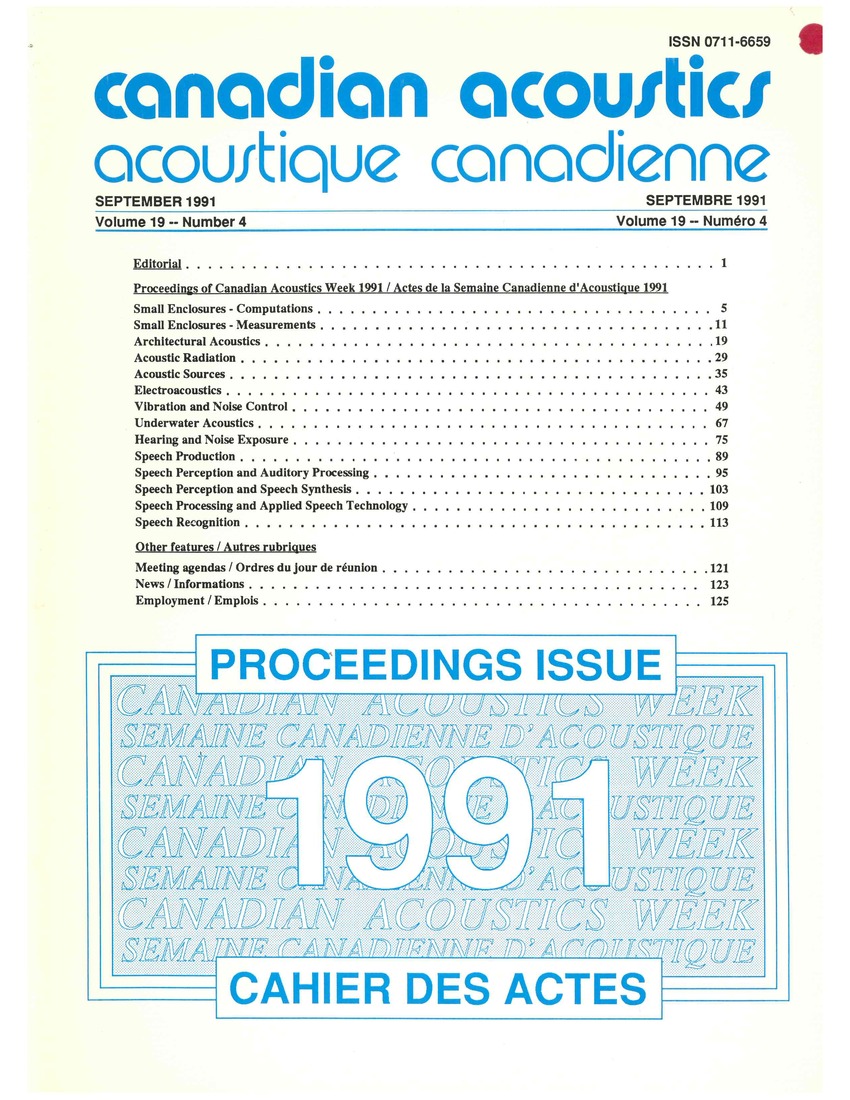Computer modelling of lexical tone perception
Mots-clés :
hearing, speech intelligibility, speech recognition, computer modelling, lexical tone perception, computer speech recognition, speech perception process, speaker-independent speech recognition, Mandarin Chinese, tone-perception model, perceptual dimensions, domain, acoustic cuesRésumé
Theoretical importance and practical implications of research on computer speech recognition generate considerable interest in this field among linguists, psychologists, and communication engineers alike. The long-term aim is to design a model reflecting the speech perception process and eventually simulate it by a computer program able to perform speaker-independent speech recognition. The present study focuses on one aspect relevant for tone languages, the recognition of lexical tones. The language chosen is Mandarin Chinese (MC). To build the tone-perception model, two aspects of tone were investigated: perceptual dimensions and domain. The perceptual dimensions specify which acoustic cues contribute to the lexical tone perception and how these cues are represented in the auditory system. Tone domain determines where in the syllable the lexical tone is physically locatedFichiers supplémentaires
Publié-e
Comment citer
Numéro
Rubrique
Licence
Author Licensing Addendum
This Licensing Addendum ("Addendum") is entered into between the undersigned Author(s) and Canadian Acoustics journal published by the Canadian Acoustical Association (hereinafter referred to as the "Publisher"). The Author(s) and the Publisher agree as follows:
-
Retained Rights: The Author(s) retain(s) the following rights:
- The right to reproduce, distribute, and publicly display the Work on the Author's personal website or the website of the Author's institution.
- The right to use the Work in the Author's teaching activities and presentations.
- The right to include the Work in a compilation for the Author's personal use, not for sale.
-
Grant of License: The Author(s) grant(s) to the Publisher a worldwide exclusive license to publish, reproduce, distribute, and display the Work in Canadian Acoustics and any other formats and media deemed appropriate by the Publisher.
-
Attribution: The Publisher agrees to include proper attribution to the Author(s) in all publications and reproductions of the Work.
-
No Conflict: This Addendum is intended to be in harmony with, and not in conflict with, the terms and conditions of the original agreement entered into between the Author(s) and the Publisher.
-
Copyright Clause: Copyright on articles is held by the Author(s). The corresponding Author has the right to grant on behalf of all Authors and does grant on behalf of all Authors, a worldwide exclusive license to the Publisher and its licensees in perpetuity, in all forms, formats, and media (whether known now or created in the future), including but not limited to the rights to publish, reproduce, distribute, display, store, translate, create adaptations, reprints, include within collections, and create summaries, extracts, and/or abstracts of the Contribution.


